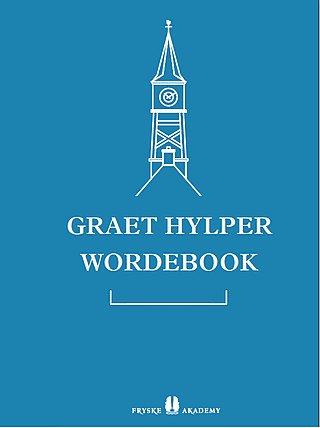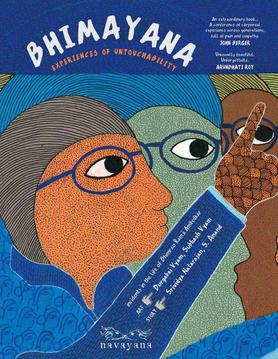Related Research Articles
Ethnologue: Languages of the World is an annual reference publication in print and online that provides statistics and other information on the living languages of the world. It is the world's most comprehensive catalogue of languages. It was first issued in 1951, and is now published by SIL International, an American evangelical Christian non-profit organization.
The Istriot language is a Romance language of the Italo-Dalmatian branch spoken by about 400 people in the southwestern part of the Istrian peninsula in Croatia, particularly in Rovinj and Vodnjan. It should not be confused with the Istrian dialect of the Venetian language or the more distantly related Istro-Romanian, a variety of Eastern Romance.

The Gondi (Gōṇḍī) or Gond people, who refer to themselves as "Kōītōr", are an ethnolinguistic group in India. Their native language, Gondi, belongs to the Dravidian family. They are spread over the states of Madhya Pradesh, Maharashtra, Chhattisgarh, Uttar Pradesh, Telangana, Andhra Pradesh, Bihar, and Odisha. They are listed as a Scheduled Tribe for the purpose of India's system of reservation.

Gondi (Gōṇḍī), natively known as Koitur, is a South-Central Dravidian language, spoken by about three million Gondi people, chiefly in the Indian states of Madhya Pradesh, Maharashtra, Chhattisgarh, Andhra Pradesh, Telangana and by small minorities in neighbouring states. Although it is the language of the Gond people, it is highly endangered, with only one fifth of Gonds speaking the language. Gondi has a rich folk literature, examples of which are wedding songs and narrations. Gondi people are ethnically related to the Telugus.

Arrernte or Aranda, or sometimes referred to as Upper Arrernte, is a dialect cluster in the Arandic language group spoken in parts of the Northern Territory, Australia, by the Arrernte people. Other spelling variations are Arunta or Arrarnta, and all of the dialects have multiple other names.

Kunigami or Northern Okinawan is a Ryukyuan language of Northern Okinawa Island in Kunigami District and city of Nago, otherwise known as the Yanbaru region, historically the territory of the kingdom of Hokuzan.
The Ika language is an Igbo dialect, classified under Nuclear Igboid in the Yeai language family.

There are 43 recognized Scheduled Tribes in Madhya Pradesh, India, three of which have been identified as "Particularly Vulnerable Tribal Groups" or "PTGs". The population of Scheduled Tribals (ST) is 21.1 per cent of the state population, according to the 2011 census. Bounded by the Narmada River to the north and the Godavari River to the southeast, tribal peoples occupy the slopes of the region's mountains.
Nones is a dialect named after and spoken in the Non Valley in Trentino, northern Italy. It is estimated that around 30,000 people speak in Non Valley, Rabbi Valley and the low Sole Valley.
The Agariya language is a spurious language said to be spoken by the Agariya people, a community found in northern Chhattisgarh, western Odisha and eastern Madhya Pradesh. Although recorded in Ethnologue with an ISO code, the language is declared as being of the Dravidian languages and as unattested by Glottolog and its existence was explicitly denied by noted scholar of tribal traditions Verrier Elwin, and more recently by linguist Felix Rau and Paul Sidwell. This was primarily due to suspicions of the conflating of various different 'Agariya' tribes with different dialects. Agariya shares similarities to languages such as Chhattisgarhi, Odia, and Sambalpuri. Agharia as the language claims to descent from the mixing of the languages Laria and Odia and Sambalpuri themselves, when the Laria language came in contact with Odia and Sambalpuri dialects, leading to lexical borrowing, making so that a native speaker has only retained about 5-6 percent of the original word list.
The Gondi languages are a subgroup of the indigenous family that includes Gondi and related languages. Gondi proper is the most widely spoken language, with over 10 million speakers. Other languages in this subgroup include Muria, Madiya, and Koya. It is undetermined whether Pardhan is a separate language or a dialect of Gondi, although current fieldwork suggests it is a dialect. Khirwar is a poorly-attested language spoken by people in the general Gond area, and so is assumed to be related to Gondi.

Hindeloopen Frisian is a West Frisian variety spoken in the port town of Hindeloopen and the village of Molkwerum on the west coast of Friesland. It has preserved much of the Old Frisian phonology and lexicon, and has been attested to since the 17th Century. Hindelooper is spoken by some 500 people in Hindeloopen, almost all of them elderly, with the number of speakers decreasing.

Gowari is an Indian caste of cattleman or herdsmen, predominantly residing in Maharashtra, Madhya Pradesh, and Chhattisgarh.
The Italo-Dalmatian languages, or Central Romance languages, are a group of Romance languages spoken in Italy, Corsica (France), and formerly in Dalmatia (Croatia).

Nagoba Jatara is Gond and pradhan tribal festival held in a Keslapur village, Indravelly Mandal Adilabad district, Telangana, India. It is the second biggest tribal carnival and celebrated by Mesram clan of Gond&Pardhan tribes for 10 days. Tribal people from Maharashtra, Chhattisgarh, Orissa and Madhya Pradesh belonging to the Mesram clan offer prayers at the festival.

The Gunjala Gondi lipi or Gunjala Gondi script is a script used to write the Gondi language, a Dravidian language spoken by the Gond people of northern Telangana, eastern Maharashtra, southeastern Madhya Pradesh, and Chhattisgarh. Approximately a dozen manuscripts in the script were recovered from Gunjala, a Gond village in Adilabad district of Telangana, by a team of researchers from the University of Hyderabad, led by Professor Jayadheer Tirumala Rao. The script and preliminary font were unveiled in early 2014.

Bhimayana: Incidents in the Life of Bhimrao Ramji Ambedkar is a graphic biography of Bhimrao Ramji Ambedkar published in 2011 by Navayana and was hailed by CNN as being among the top five political comic books. It was created by artists Durgabai Vyam, Subhash Vyam and writers Srividya Natarajan and S. Anand. It depicts the experiences of caste discrimination and resistance that Bhimrao Ambedkar recorded in his autobiographical illustrations, later compiled and edited in Babasaheb Ambedkar: Writings and Speeches by Vasant Moon under the title "Waiting for a Visa". It is one of India's top selling graphic books.

Jangarh Singh Shyam (1962–2001) was a pioneering contemporary Indian artist credited with being the creator of a new school of Indian art called Jangarh Kalam. His work has been exhibited widely the world over including Bhopal, Delhi, Tokyo and New York. His most notable exhibitions include the Magiciens de la terre in Paris (1989) and Other Masters curated by Jyotindra Jain at the Crafts Museum, New Delhi (1998). His 1988 piece Landscape with Spider sold for $31,250 at Sotheby's, New York, in 2010—a first for an adivasi artist. Jangarh had also painted the interiors of the Legislative Assembly of Madhya Pradesh, the Vidhan Bhavan, and the dome of Bhopal's Bharat Bhavan—one of the most prestigious museums of tribal and contemporary Indian art. He was among the first Gond artists to use paper and canvas for his paintings, thereby inaugurating what is now known as Jangarh Kalam.

Venkat Raman Singh Shyam is a contemporary Indian artist who works with murals, etchings, mixed media and animation. Venkat has travelled extensively and exhibited his work in India and the world over. He was awarded the Rajya Hasta Shilpa Puraskar by the Government of Madhya Pradesh in 2002. He was also the coordinator for an animated film on a Gond folktale made by Tara Douglas which won the Tallest Story Competition Trophy at the Inverness Film Festival, Scotland, in 2007.
References
- 1 2 Pardhan at Ethnologue (25th ed., 2022)

- ↑ Valte, Thangmualian; Mathai, Eldose K.; George, Symon (2008). "A Sociolinguistic Survey Among the Pardhan Community of Central India". CiteSeerX 10.1.1.559.17 .
- ↑ "Glottolog 5.1 - Pardhan". glottolog.org. Retrieved 2024-12-20.